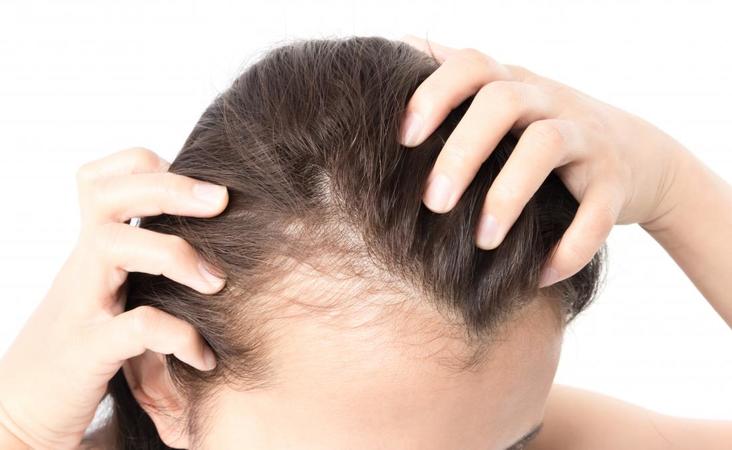Frontal Fibrosing Alopecia: Causes, Treatments & Success Stories
- Written by Lordhair Team
- Sep 25, 2020
- |
- 10 min read
 Listen to the full text
Listen to the full textHair loss can occur anywhere on our body but mostly affects the scalp. A lot of us suffer from symmetrical hair loss on the front and sides of the scalp. This type of hair condition is called Frontal fibrosing alopecia (FFA).
Dermatologists discovered frontal fibrosing alopecia condition around 2 decades ago. A lot of hair and skin experts today still mistake it for pattern baldness. To clear out this confusion, we decided to play a part.
In this blog, Lordhair will cover everything you need to know about frontal fibrosing alopecia. From causes to treatments and popular recovery products and success stories, we will discuss it all in detail.
Let’s begin by understanding what exactly frontal fibrosing alopecia is.
What is frontal fibrosing alopecia?
Frontal fibrosing alopecia is an autoimmune disease that causes hair loss, mainly around the front hairline of the head. Also called scarring alopecia or cicatricial alopecia, it typically occurs in a receding hairline pattern and may cause hair loss to the eyebrows and underarms as well.
FFA (short for Frontal fibrosing alopecia) causes inflammation and targets hair follicles on the scalp. Being a form of lichen planopilaris, it is characterized by slow progressive hair loss and permanent scarring near the forehead. Frontal fibrosing alopecia commonly affects post-menopausal women.

Causes of frontal fibrosing alopecia
Causes of frontal fibrosing alopecia are a subject of ongoing research. Some scientists have discovered that FFA is caused by an autoimmune condition in which an affected person’s immune system mistakenly attacks hair follicles at the front. It is also considered as a subtype of another disease called lichen planopilaris, which affects T-lymphocytes, a type of white blood cell leading to progressive hair loss.
The white blood cells form part of the body’s immune system. When the body mounts an immune response, it causes inflammation and eventually destroys the hair follicles in specific areas.
Hormonal imbalance is another major cause behind frontal fibrosing alopecia among women. The fact that hormonal hair loss is mostly seen in post-menopausal women strongly convinced scientists that sudden changes in hormones contribute to the disorder. While these are possible causes behind frontal fibrosing alopecia, the exact cause behind this hair loss problem still remains unknown.
Treatments for frontal fibrosing alopecia
No matter which hair loss condition you are struggling with, recovery is always a hard climb. Sadly, treating frontal fibrosing alopecia is even harder as there is no specific cure that applies to all. Dermatologists are still trying to understand this hair loss disorder and develop medications with high success rates. However, there are certain medications and treatments that can help you fight this type of hair loss by slowing down its effects.
The following treatments are widely prescribed by dermatologists for frontal fibrosing alopecia recovery:
#1 Finasteride
Finasteride is a prescription drug that is widely prescribed to slow down the hair loss caused by frontal fibrosing alopecia. It comes in the form of a tablet and is used by men as well as women. Ladies who are pregnant or planning to become pregnant shouldn’t take finasteride tablets as it causes defects in developing male fetuses.
Usually, finasteride is prescribed to men dealing with the prostate disease but dermatologists with interests in hair and scalp disorders use it to see whether it can also treat frontal fibrosing alopecia. We highly recommend consulting a trained physician before taking this medication since it has some side effects as well.
Below are some common side effects of Finasteride:
- Decreased sex drive
- Skin rash
- Increase in breast size and tenderness
- Swelling of lips, tongue, throat, and face
- Stress and anxiety
Learn more about the side effects of Finasteride before usage
#2 Hair systems
Hair systems (also known as modern wigs) are widely used by men and women who have reached an advanced stage of hair loss due to frontal fibrosing alopecia. It is a non-surgical solution that is designed using natural human hair woven into a skin-friendly base hiding the hair loss areas.
Hair systems can be attached with ease using tape, adhesive, or clips. Check out this hair transformation to witness how hair systems can transform the overall look:
Benefits of wearing a hair system
Whilst there are many benefits of getting a hair system to fight hair loss, we have listed below 2 popular ones only:
Instant result: Hairpieces provide an instant change in the overall look. Unlike medication, there is no waiting time with this hair recovery option. All you need to do is buy the best hair wig for men or women and you are good to go!
Low cost: Hair systems are affordable as well as practical recovery solutions if your hair loss is pretty extreme. By spending less than US$1000 a year, you can enjoy a full head of hair.
Check out our huge collection of hair wigs for women
#3 Hydroxychloroquine
As another popular treatment for frontal fibrosing alopecia, hydroxychloroquine is an anti-material drug that is not only prescribed to patients with active signs of FFA but also used to treat a wide variety of diseases. It works by reducing the upregulation of T cells which are responsible for the inflammatory reaction present in frontal fibrosing alopecia.
Although hydroxychloroquine is slow in showing effects, it is used in this hair loss condition. However, do take a prescription from a dermatologist before getting this medication since it has its share of side effects.
#4 Corticosteroids
Corticosteroids is another preferred treatment modality for frontal fibrosing alopecia. They are known to decrease the dermal inflammatory process caused by FFA and help in stabilizing the disease. Treating the inflammation suppresses the T-cell-mediated immune attack of the follicular stem cells and hair follicles, helping prevent further hair loss.
There is no doubt that short-course corticosteroids are used to switch off inflammation caused by frontal fibrosing alopecia but it can also lead to weight gain, high blood pressure, diabetes, and osteoporosis. Hence, consulting a dermatologist is a must before taking this medication.
Above are some treatments that help prevent the frontal fibrosing alopecia hair loss from getting worse. We recommend consulting a doctor in case you are looking forward to using treatments such as finasteride, corticosteroids, or hydroxychloroquine.
Frontal fibrosing alopecia success stories
Lordhair has been designing top-notch hair systems for almost 2 decades now and is glad that it is helping patients write frontal fibrosing alopecia success stories. We are sharing some inspiring hair recovery stories and reviews that document how our customers overcame frontal fibrosing alopecia hair loss with the help of hairpieces.
Niaomi’s fibrosing alopecia success story
Niaomi started losing her hair due to frontal fibrosing alopecia post-menopause and was searching for the right hair gain solutions. Check out what Niaomi has to say about recovering from frontal fibrosing alopecia using hairpieces:

John’s frontal fibrosing alopecia success story
Frontal fibrosing alopecia hair loss is less likely to affect men. But when it does, it makes their hair condition really bad. John suffered from FFA hair loss and tried many hair gain solutions before settling for a hair system. Here’s what John’s success story looks like:

Lordhair’s hairpieces are the safest and most affordable way of dealing with frontal fibrosing alopecia hair loss and many other medical conditions that lead to partial or complete baldness.
Shop frontal fibrosing alopecia hair wigs
Currently, there are no proven cures for frontal fibrosing alopecia. Thankfully, scientists are currently conducting clinical trial testing at various stages and it’s possible that we will soon have a medication for the same. In case your frontal fibrosing alopecia is at an advanced stage, we highly recommend discussing about hair systems with your physician.
Lordhair designs and ships custom hair systems to men and women in over 100+ countries. From hair type to color, texture, length, and style, our modern hair wigs can be tweaked in every way.
Send your questions about hair systems to support@lordhair.com and we will assist you with everything.
Other major health conditions that lead to hair loss:




